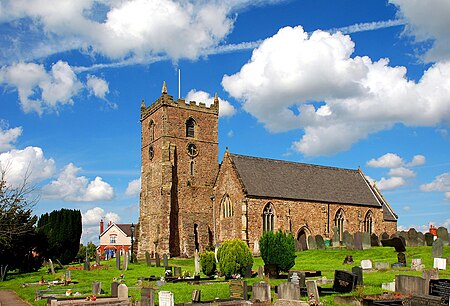Ratby
Civil parishes in LeicestershireHinckley and BosworthUse British English from July 2015Villages in Leicestershire

Ratby is a commuter village and civil parish in the Hinckley and Bosworth district of Leicestershire, England. It is situated to the west of Leicester, and just south of the M1 motorway. (Groby is on the northern side of the M1.) The population of the civil parish was measured in the 2011 census as 4,468. Other nearby places include Field Head, Kirby Muxloe, Glenfield and Markfield. The proximity of Ratby to Leicester causes it to form part of the Leicester Urban Area.
Excerpt from the Wikipedia article Ratby (License: CC BY-SA 3.0, Authors, Images).Ratby
Am Berg,
Geographical coordinates (GPS) Address Nearby Places Show on map
Geographical coordinates (GPS)
| Latitude | Longitude |
|---|---|
| N 52.648 ° | E -1.242 ° |
Address
Am Berg 2
91809
Bayern, Deutschland
Open on Google Maps








